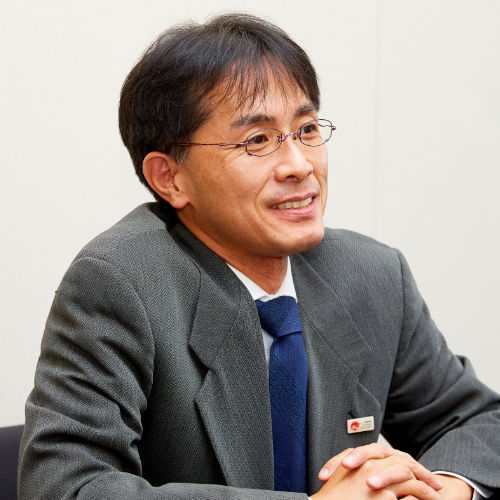Travel planning
 International tourism head Tomohiro Kaneko offers his vision for the future of travel to Japan
International tourism head Tomohiro Kaneko offers his vision for the future of travel to Japan
With hundreds of millions of people around the world under orders to stay at home for much of the year, 2020 has been devastating for the global travel industry. And Japan, which had been counting on bumper visitor numbers due to the Tokyo Olympics and Paralympics, has not been spared the adverse effects of the Covid-19 pandemic.
“The pandemic had a grave impact on the numbers of inbound visitors,” says Tomohiro Kaneko, Director General of International Tourism Department, Japan Tourism Agency (JTA), Ministry of Land, Infrastructure, Transport and Tourism. Before the global shutdown, inbound tourism to Japan was booming – 2019 saw nearly 32 million people visit the country, a fourfold increase on 2012’s figures. As of October, visitor numbers for 2020 have reached four million.
Despite this significant setback Kaneko is confident that a bold target of 60 million annual visitors by 2030 will be achieved. “When JNTO [Japan National Tourism Organization] ran a booth at the August 2020 Taipei Tourism Expo it drew in 40,000 people, 20 percent of attendees, which for me is a clear indication that there is significant foreign interest from within Asia,” says Kaneko. “Also, an independent survey provided us with data that Japan ranks number one among Asian countries people want to visit when the coronavirus pandemic comes to an end. In light of these findings we concluded that even taking into account the current global contagion, there were still many steps we could take to achieve our target of 60 million foreign visitors in 2030.”
“Japan ranks number one among Asian countries people want to visit when the coronavirus pandemic comes to an end”
Preparing for a post-Covid world
For the time being, Kaneko says, it isn’t prudent to invest too much time and money into promoting Japan as a tourist destination overseas because “the necessity for foreigners arriving in the country to remain quarantined for two weeks” is an “extremely tough sell”. But this relatively quiet period has given him an opportunity to “prepare and polish” JTA’s future promotional activities. Once Covid-19 restrictions are partially or fully lifted, Kaneko appreciates that the key to success will involve understanding the “mindset and needs” of those traveling soon after a pandemic, a task which will involve “disseminating information about Japan’s status as a safe, secure country in a vast array of languages”. In the medium-term, when tourists might be a bit more concerned about health and safety than they were pre-pandemic, Japan should publicize its excellent record on public health, says Kaneko. “In Taiwan and China, there is a perception that Japan has a large number of infected people,” he says.
“It is very important to let those who are hesitating know that we are taking measures against the coronavirus.” Kaneko cites some of the stringent new rules that players in the tourist industry have to follow to ensure visitors’ safety, such as hotels taking guests’ temperature at check-in and transport companies ventilating their vehicles as an example of how Japan will reassure visitors. “The general impression Japan has is one of safety and good public health. We lead the world in such areas, so I think making more appeals overseas will help connect to inbound travel.”
Digital directions
“A key area is sustainable tourism…”
When the promotional campaigns are back in full swing, Kaneko expects digital technology to play an increasingly large role and allow for “individually-tailored content through web analysis and other strategies and tools.” JTA will invest in high-quality digital content, not merely focusing on Japan’s “golden routes”, the well-trodden paths historically taken by tourists, but on regions of the country less accustomed to international visitors.
Kaneko points to two categories of tourism he believes hold great potential for Japan. Adventure tourism should be developed further, he says, with attractions such as Hokkaido’s winter sports resorts and unique Ainu culture likely to play a big role in the country’s future tourism offering.
A second key area is sustainable tourism. Kaneko offers some examples of the kind of guidelines that have already been introduced to make inbound tourism more eco-friendly: seasonal limitations on visitor numbers at Shiretoko in Hokkaido, to preserve nature while operating a tourism facility where too much tourism can damage the natural environment; tours in Tosashimizu in Kochi Prefecture which allow visiting divers to exterminate crown-of-thorns starfish to help protect the ocean coral; and old houses being converted into lodgings for pilgrims at the Ninna-ji Temple, a World Heritage Site in Kyoto, so that such cultural properties can be preserved and restored while remaining in operation.
It’s been a tough year for the tourism industry, but Kaneko sees light at the end of the tunnel. After all, he points out, the pandemic “has done nothing to dull the luster of touristic draws such as food, nature, hospitality, culture and history in regions across Japan.” The future for the country’s international tourism appears to be bright.